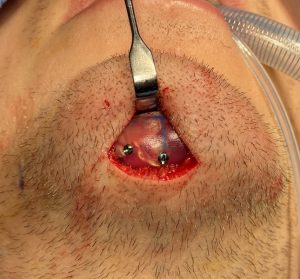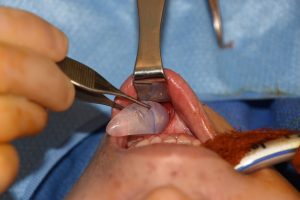
In the January 2023 issue of the Journal of Cosmetic Surgery an article was published on this topic entitled ‘Comparisons of Outcomes of Chin Implantation Using The Transoral Versus Submental Technique: A Systematic Review’. In this paper the authors performed a literature review from 1966 to 2020, a period of over 50 years of published articles on chin implants. A total of 1,410 articles were found that contained the subject. From these articles 38 were found to specific discuss or identify the chin implant incisional approach used and the rate of complications. (20 for intraoral,, 15 for submental and 3 for combined approaches) Such complications included infection, seroma, extrusion, wound dehiscence, nerve injury, malposition and revision rates.
Total complication rates in in the intraoral group ranged from 0% to 14.7% while it was 0% to 15% in the submental incision studies. The authors conclude that there was no clear difference in complication rates between the two groups.
I think carrying their conclusion further…with good technique either incisional approach works. Both approaches can be effective placement techniques with low complication rates. But that being said having seen a lot of chin implant revisional surgery patients there are some trends that are not evident in reported studies. The intraoral approach is prone to have a higher implant placement on the bone particularly if screw fixation is not used. It is also not the best approach if the chin implant is to provide vertical lengthening. Also, my suspicion is that there has to a somewhat higher infection rate going through the mouth but probably not by a significant amount.
Conversely the submental appears to have a higher rate of implant malposition with differences in the position of the side wings. (by 3D CT scans) But this may only be apparent because the number of submental approaches seen is substantially higher than intraoral approach by at least 5:1…maybe more. This is also probably reflective of much smaller incisions are made from the submental approach due to the scar than intraorally where scar length is not visible.
Dr. Barry Eppley
World-Renowned Plastic Surgeon



